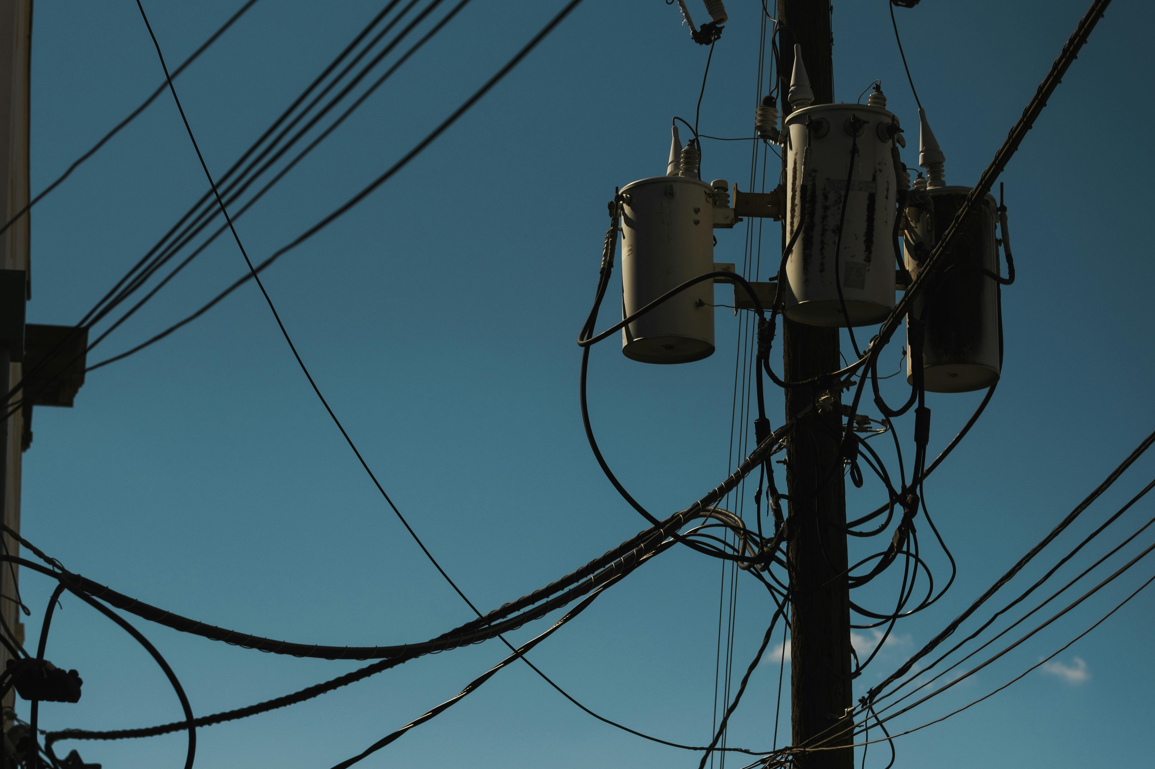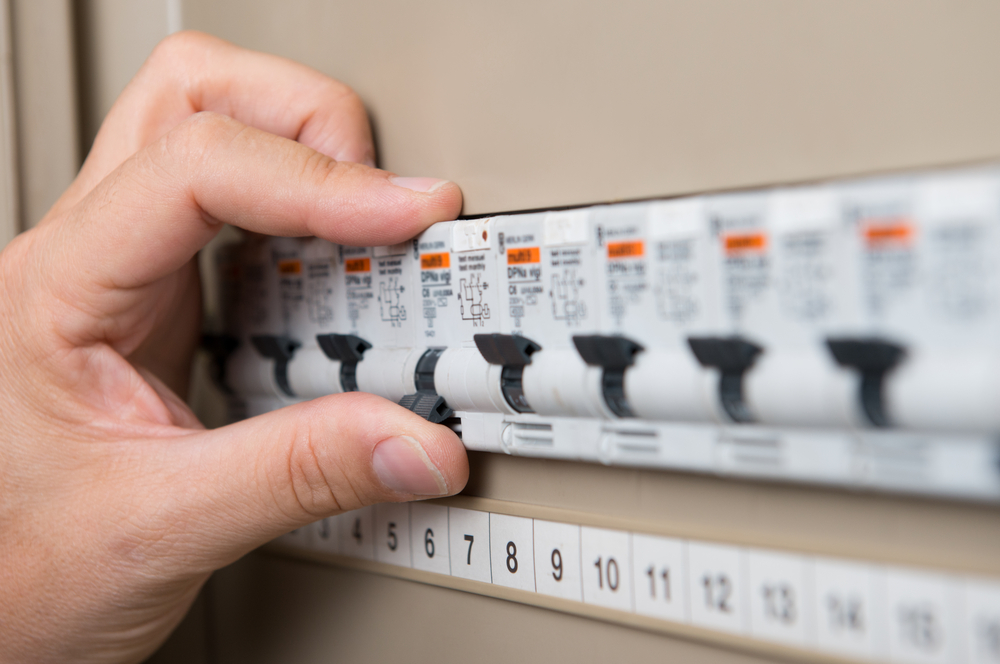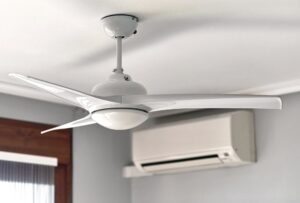What causes a power outage? Numerous factors contribute to cutting our electrical supply, whether it’s a violent storm, a technical failure, or an unexpected wildlife encounter. This article breaks down the leading causes of power outages, how they affect you, and the steps you can take to remain prepared for when power loss strikes.
Key Takeaways
- Power outages can be caused by severe weather, equipment failure, human error, animal interference, and vehicle accidents, ranging from short-term brownouts to long-term blackouts.
- Preventive measures include using surge protectors, uninterruptible power supplies, backup generators, and regular maintenance of electrical systems to mitigate the impact of potential outages.
- During power outages, it’s important to unplug appliances to avoid damage from surges, have an emergency kit ready, and follow safety protocols such as staying away from fallen power lines and never operating generators indoors.
Types of Power Outages
A power outage is a short or long-term loss of electric power in a specific area for various reasons. One such disturbance is a brownout, a temporary voltage drop in the electrical power supply. This voltage fluctuation can cause sensitive electronics and equipment to malfunction or shut down, leading to performance issues.
Alternatively, permanent faults in the power line can result in substantial power shortages until the fault is rectified, often restoring energy automatically. An area experiences a blackout when there is a complete loss of power, lasting anywhere from a few minutes to several weeks.
Such severe outages, often due to:
- equipment failure
- severe weather conditions
- natural disasters
- major issues with the power grid
can disrupt daily life and present significant challenges.
Lastly, rolling blackouts are a systematic, often planned approach to reduce pressure on the power grid by rotating outages across different geographic regions.+

Weather-Related Causes
Mother Nature can be a formidable adversary in maintaining a steady power supply. Severe storms, for instance, can knock down power lines through strong winds, causing trees and branches to fall. Lightning strikes during storms can cause power surges that can overload transformers and cause problems.
Rain, snow, and ice also play a role in causing power outages. Heavy rain can damage insulation elements on power lines, leading to failures like blown fuses. Snow and ice storms can weigh down power lines with their accumulation, potentially leading to snapped cables and outages.
Besides, both high temperatures and cold weather can affect power lines negatively, causing them to sag or contract, leading to infrastructure damage and failure, which results in the system losing power.
Equipment Failure and Human Error
Beyond the wrath of Mother Nature, power outages can also result from equipment failure and human error, sometimes leading to an unplanned power outage or an electricity outage.
We’ll explore the specifics of these causes in the following subsections.
Overloaded Circuits and Power Boards
Overloading of power boards can occur if too many appliances are plugged into one power board. This scenario can lead to tripped circuits, interrupting the power supply. Common causes for tripped circuit breakers or blown fuses in a household can result from overload or short circuits.
Frequently, power outages occur due to the simultaneous usage of several high-energy-consuming appliances. A simple correction involves resetting a tripped switch in the electrical box to restore power. Overloads and subsequent power outages can also be triggered by high demand on the power system, regardless of weather conditions.
Maintenance and Repair Work
Despite causing temporary inconvenience, planned power outages are vital for routine maintenance and repairs on the electrical infrastructure. They differ from unplanned rolling blackouts and are typically short-lived. Consumers are notified about these maintenance-related outages, enabling them to prepare accordingly.
Regular maintenance procedures ensure the power system complies with industry standards, reducing the likelihood of incurring penalties or facing legal liabilities. So, while it may be frustrating to be without power for a short while, remember that these planned outages are for the greater good of providing a continuous and safe power supply.
Animal Interference and Vehicle Accidents
Surprisingly, our furry and feathered friends can also play a role in causing power outages. Birds, for example, can cause power outages when they come into contact with power lines or cause lines to swing and clash.
On the other hand, vehicle accidents can also disrupt the power supply. Accidents that result in broken poles or contact between power lines can lead to power outages. So, many factors can unexpectedly disrupt our power supply, whether it’s a bird on a wire or an unfortunate car accident.

Preventive Measures for Power Outages
While we cannot control weather patterns or prevent animals from interacting with power lines, we can take steps to minimise the impact of power outages. One such measure is to protect electronics by plugging them into surge protectors. This can prevent damage from electrical surges when power returns, and an uninterruptible power supply (UPS) can allow for safe shutdown of devices during an outage.
Investing in a backup generator can ensure a continuous power supply during outages, enabling essential electrical equipment to maintain normal operation. Furthermore, regular maintenance of electrical systems, including voltage monitoring and thermal protectors, along with inspection and replacement of outdated wiring, can significantly prevent power outages.
What to Do During a Power Outage
Knowing what to do can make a big difference if we find ourselves amid a power outage despite our best efforts. Having a battery-operated radio can be helpful in such situations, especially to tune into a local radio station for updates.
We’ll separate this into how to handle dull or flickering lights and how to prepare for emergencies.
Coping with Dull or Flickering Lights
In a power outage with dull or flickering lights, turning off and unplugging appliances from easily accessible power points is advised. This action prevents potential damage to your appliances from the sudden surge of electricity when the normal supply resumes.
If dull or flickering lights continue after a power outage, avoid touching your switchboard or any metal objects. In these instances, contacting your electricity distributor immediately for help is recommended.
Emergency Preparedness
Being prepared for a power outage can significantly reduce its impact. This includes stocking an emergency kit with the following:
- a three-day food supply
- clean water
- solar chargers
- flashlights with extra batteries
- other essentials
Individuals with life support equipment should have an action plan and contact their Network Service Provider or electricity retailer. It’s crucial to ensure an emergency generator is installed and functioning. Furthermore, measures should be taken to preserve food during an outage, and plumbing systems requiring electrical pumps to prevent sewage backup should be avoided.
Lastly, keeping an available list of emergency numbers can prove immensely helpful during such times.
Safety Tips for Power Outages
Safety should always be the top priority during a power outage. Here are some essential safety tips to keep in mind:
- Stay at least 8 to 10 meters away from fallen or broken power lines to avoid the risk of electrocution.
- If you’re using a generator, never operate it indoors or in enclosed areas to prevent carbon monoxide poisoning.
- Use only heavy-duty outdoor-rated extension cords when connecting appliances to the generator.
If you have a solar PV system, here are some important safety tips to remember during a power outage:
- Shut down the system using the safe isolation procedure, which includes turning off the safety switch.
- Avoid touching the switchboard or anything metal.
- Unplug appliances if you experience dull or flickering lights due to a ‘brown out’, low voltage, or partial supply.
- Do not attempt to repair any electrical issues yourself; always engage a licensed electrician for electrical work.
Summary
In conclusion, power outages can be caused by many factors, from severe weather conditions to equipment failure, human error, and even animal interference. While we can’t always prevent these outages, understanding their causes makes us better prepared. With the right preventive measures, safety protocols, and a well-equipped emergency kit, we can minimise the impact of power outages. Remember, safety is paramount, and when in doubt, always contact professionals for help.
Frequently Asked Questions
What is the most likely cause of a power outage?
The most likely causes of a power outage are natural causes, human error, and overload. These interruptions between power generation and supply can be due to weather conditions, equipment failure, or animal interference. So, power outages can result from lightning strikes, blown fuses, frayed wires, damaged equipment, substation failure, storms, and trees.
What’s causing power outages in Australia?
Lightning strikes, fallen trees, streetlights, high winds during stormy weather, and damage from earthquakes and other natural disasters often cause power outages in Australia. It’s essential to be prepared for these potential causes of power interruptions.
What happens when the power goes out?
During a power outage, the loss of electricity is usually due to unexpected damage to the network, disrupting essential services like communications, water, and transportation, as well as causing food spoilage and water contamination. It’s essential to be prepared for these potential consequences.
What is the first thing you do when the power goes out?
When the power goes out, the first thing to do is to confirm the outage and contact your local utility for assistance. Afterwards, switch off all appliances and use flashlights for lighting. It’s important to stay prepared for such situations.
What are the different types of power outages?
The different types of power outages include brownouts, permanent faults, blackouts, and rolling blackouts, each caused by different factors and having varying impacts. Understanding these types can help you better prepare for potential outages.











